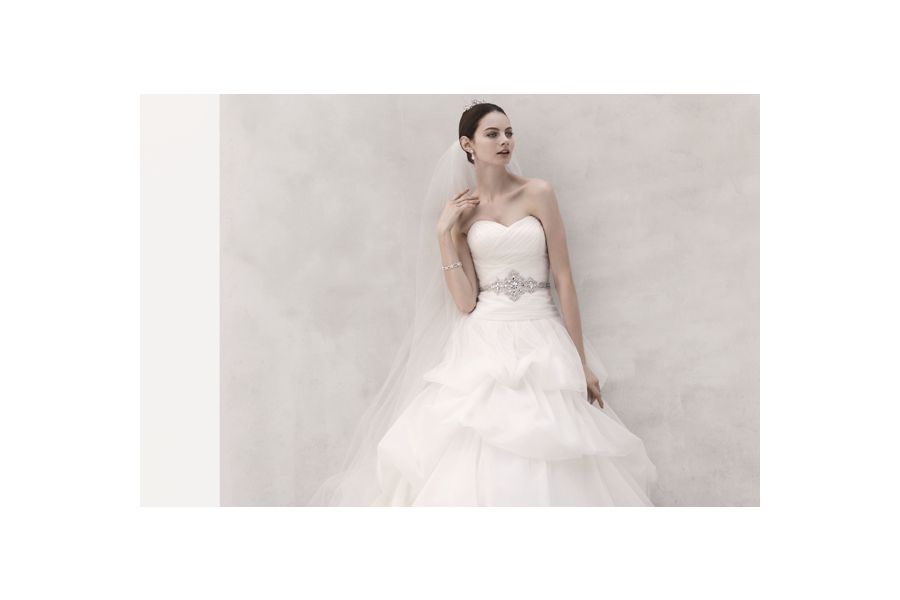Finding a Fashionable Fit

Bodice fit isn’t the only factor to consider when deciding on a ball-gown silhouette. Brides accustomed to wearing body-hugging long dresses to black tie events may find a super-sized gown requires learning to maneuver in new ways.
“A ball skirt can include layers of crinoline, even hoops,” says Kerri Rourke Hileman, owner of The White Magnolia, a designer gown boutique in Jacksonville, Fla. Not to mention the long trains formal-style bridal ball gowns often have.
Which brings up a few wearability questions. For a ceremony and reception – six or more hours – is a major ball dress the most practical and comfortable way to go? Can a bride tear up the dance floor with a hooped ball skirt?
There’s always the option of switching into a second, reception-ready wedding dress, but budget and sentiment may rule against it. “Some brides can’t bear the thought of changing out of their dresses and choose to stay in their ball gowns for the entire wedding,” says Catalina Maddox, bridal fashion director for David’s Bridal. In these instances, long skirts and trains can be bustled, which will help a bride glide around her reception venue as if wearing a much trimmer silhouette.
Since long skirts and trains obviously require more fabric than trim mermaid and trumpet styles, fabric weight is another important factor to consider. While an organza ball dress can have a feathery feel, despite its yardage, one in duchess satin, or a heavy beaded lace, will likely tip the scales beyond the average 8 to 10 pounds a bridal gown weighs.
Are ball gown styles suitable for every climate? Hileman says brides marrying in warm-weather locales or during hot summer months should stick with lightweight organzas or tulles. Maddox feels personal style drives dress choice as much as the venue and weather temperature. “Today, it’s not uncommon to see ball gowns even on the beach.”
© Brides365
[Image: David’s Bridal/Oleg Cassini]